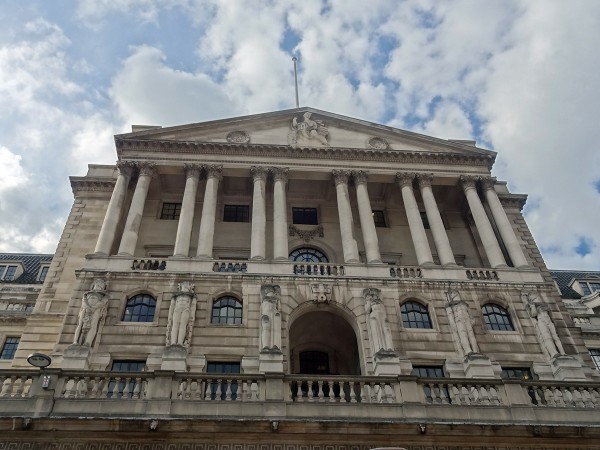 On 2 November, the Bank of England raised Bank rate from 0.25% to 0.5% – the first rise since July 2007. But was now the right time to raise interest rates? Seven of the nine-person Monetary Policy Committee voted to do so; two voted to keep Bank Rate at 0.25%.
On 2 November, the Bank of England raised Bank rate from 0.25% to 0.5% – the first rise since July 2007. But was now the right time to raise interest rates? Seven of the nine-person Monetary Policy Committee voted to do so; two voted to keep Bank Rate at 0.25%.
Raising the rate, on first sight, may seem a surprising decision as growth remains sluggish. Indeed, the two MPC members who voted against the rise argued that wage growth was too weak to justify the rise. Also, inflation is likely to fall as the effects of the Brexit-vote-induced depreciation of sterling on prices feeds through the economy. In other words, prices are likely to settle at the new higher levels but will not carry on rising – at least not at the same rate.
So why did the other seven members vote to raise Bank Rate. There are three main arguments:
|
|
| • |
Inflation, at 3%, is above the target of 2% and is likely to stay above the target if interest rates are not raised. |
| • |
There is little spare capacity in the economy, with low unemployment. There is no shortage of aggregate demand relative to output. |
| • |
With productivity growth being negligible and persistently below that before the financial crisis, aggregate demand, although growing slower than in the past, is growing excessively relative to the growth in aggregate supply. |
As the Governor stated at the press conference:
In many respects, the decision today is straightforward: with inflation high, slack disappearing, and the economy growing at rates above its speed limit, inflation is unlikely to return to the 2% target without some increase in interest rates.
But, of course, the MPC’s forecasts may turn out to be incorrect. Many things are hard to predict. These include: the outcomes of the Brexit negotiations; consumer and business confidence and their effects on consumption and investment; levels of growth in other countries and their effects on UK exports; and the effects of the higher interest rates on saving and borrowing and hence on aggregate demand.
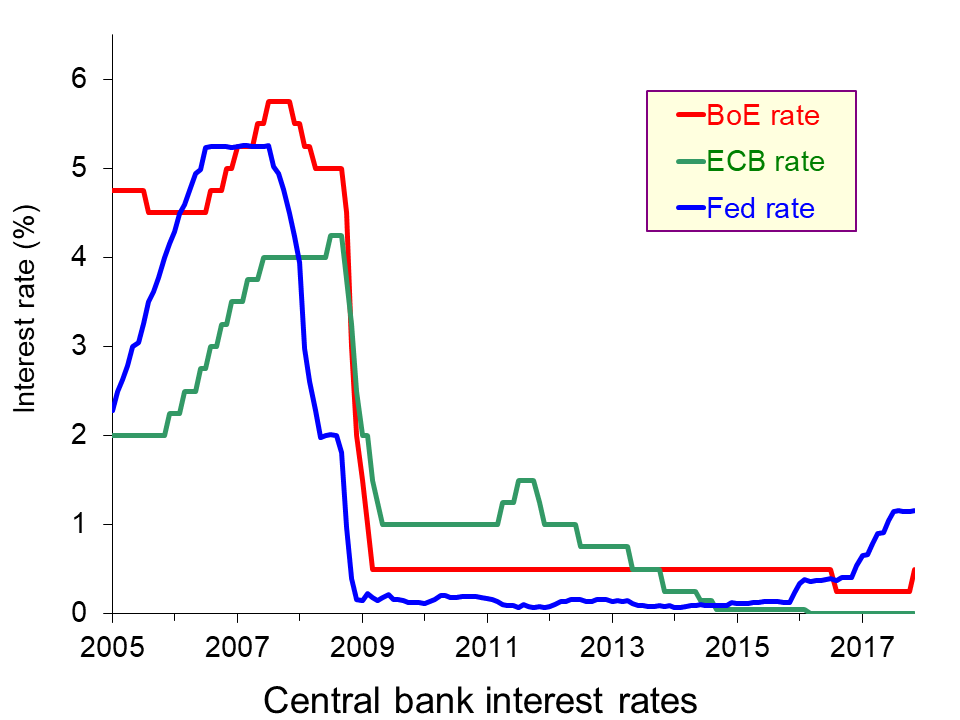 The Bank of England is well aware of these uncertainties. Although it plans two more rises in the coming months and then Bank Rate remaining at 1% for some time, this is based on its current assessment of the outlook for the economy. If circumstances change, the Bank will adjust the timing and total amount of future interest rate changes.
The Bank of England is well aware of these uncertainties. Although it plans two more rises in the coming months and then Bank Rate remaining at 1% for some time, this is based on its current assessment of the outlook for the economy. If circumstances change, the Bank will adjust the timing and total amount of future interest rate changes.
There are, however, dangers in the rise in interest rates. Household debt is at very high levels and, although the cost of servicing these debts is relatively low, even a rise in interest rates of just 0.25 percentage points can represent a large percentage increase. For example, a rise in a typical variable mortgage interest rate from 4.25% to 4.5% represents a 5.9% increase. Any resulting decline in consumer spending could dent business confidence and reduce investment.
Nevertheless, the Bank estimates that the effect of higher mortgage rates is likely to be small, given that some 60% of mortgages are at fixed rates. However, people need to refinance such rates every two or three years and may also worry about the rises to come promised by the Bank.
Articles
Bank of England deputy says interest rate rise means pain for households and more hikes could be in store Independent, Ben Chapman (3/11/17)
UK interest rates: Bank of England shrugs off Brexit nerves to launch first hike in over a decade Independent, Ben Chu (2/11/17)
 Bank of England takes slow lane after first rate hike since Reuters, David Milliken, William Schomberg and Julian Satterthwaite (2/11/17)
Bank of England takes slow lane after first rate hike since Reuters, David Milliken, William Schomberg and Julian Satterthwaite (2/11/17)
First UK rate rise in a decade will be a slow burn Financial Times, Gemma Tetlow (2/11/17)
The Bank of England’s Rate Rise Could Spook Britain’s Economy Bloomberg, Fergal O’Brien and Brian Swint (3/11/17)
 Bank of England hikes rates for the first time in a decade CNBC, Sam Meredith (2/11/17)
Bank of England hikes rates for the first time in a decade CNBC, Sam Meredith (2/11/17)
Interest rates rise in Britain for the first time in a decade The Economist (2/11/17)
Bank of England publications
 Bank of England Inflation Report Press Conference, Opening Remarks Financial Times on YouTube, Mark Carney (2/11/17)
Bank of England Inflation Report Press Conference, Opening Remarks Financial Times on YouTube, Mark Carney (2/11/17)
Bank of England Inflation Report Press Conference, Opening Remarks Bank of England, Mark Carney (2/11/17)
 Inflation Report Press Conference (full) Bank of England on YouTube (2/11/17)
Inflation Report Press Conference (full) Bank of England on YouTube (2/11/17)
Inflation Report Bank of England (November 2017)
Monetary Policy Summary and minutes of the Monetary Policy Committee meeting ending on 1 November 2017 Bank of England (2/11/17)
Questions
- Why did the majority of MPC members feel that now was the right time to raise interest rates whereas a month ago was the wrong time?
- Why did the exchange rate fall when the announcement was made?
- How does a monetary policy of targeting the rate of inflation affect the balance between aggregate demand and aggregate supply?
- Can monetary policy affect potential output, or only actual output?
- If recent forecasts have downgraded productivity growth and hence long-term economic growth, does this support the argument for raising interest rates or does it suggest that monetary policy should be more expansionary?
- Why does the MPC effectively target inflation in the future (typically in 24 months’ time) rather than inflation today? Note that Mark Carney at the press conference said, “… it isn’t so much where inflation is now, but where it’s going that concerns us.”
- To what extent can the Bank of England’s monetary policy be described as ‘discretionary’?
 On the 15th June, the Bank of England’s Monetary Policy Committee decided to keep Bank Rate on hold at its record low of 0.25%. This was not a surprise – it was what commentators had expected. What was surprising, however, was the split in the MPC. Three of its current eight members voted to raise the rate.
On the 15th June, the Bank of England’s Monetary Policy Committee decided to keep Bank Rate on hold at its record low of 0.25%. This was not a surprise – it was what commentators had expected. What was surprising, however, was the split in the MPC. Three of its current eight members voted to raise the rate.
At first sight, raising the rate might seem the obvious thing to do. CPI inflation is currently 2.9% – up from 2.7% in April and well above the target of 2% – and is forecast to go higher later this year. According to the Bank of England’s own forecasts, even at the 24-month horizon inflation is still likely to be a little above the 2% target.
Those who voted for an increase of 0.25 percentage points to 0.5% saw it as modest, signalling only a very gradual return to more ‘normal’ interest rates. However, the five who voted to keep the rate at 0.25% felt that it could dampen demand too much.
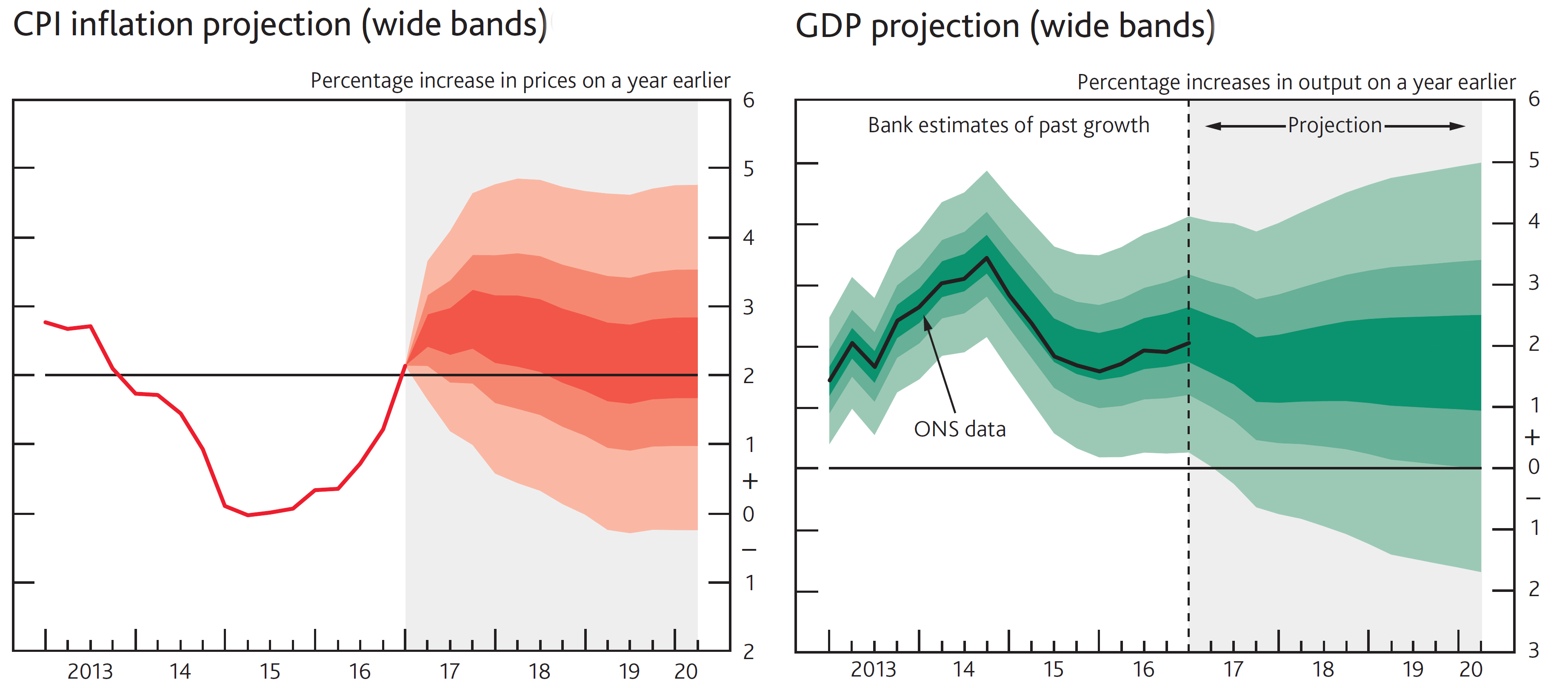
The key argument is that inflation is not of the demand-pull variety. Aggregate demand is subdued. Real wages are falling and hence consumer demand is likely to fall too. Thus many firms are cautious about investing, especially given the considerable uncertainties surrounding the nature of Brexit. The prime cause of the rise in inflation is the fall in sterling since the Brexit vote and the effect of higher import costs feeding through into retail prices. In other words, the inflation is of the cost-push variety. In such cirsumstances dampening demand further by raising interest rates would be seen by most economists as the wrong response. As the minutes of the MPC meeting state:
Attempting to offset fully the effect of weaker sterling on inflation would be achievable only at the cost of higher unemployment and, in all likelihood, even weaker income growth. For this reason, the MPC’s remit specifies that, in such exceptional circumstances, the Committee must balance any trade-off between the speed at which it intends to return inflation sustainably to the target and the support that monetary policy provides to jobs and activity.
The MPC recognises that the outlook is uncertain. It states that it stands ready to respond to circumstances as they change. If demand proves to be more resilient that it currently expects, it will raise Bank Rate. If not, it is likely to keep it on hold to continue providing a modest stimulus to the economy. However, it is unlikely to engage in further quantitative easing unless the economic outlook deteriorates markedly.
Articles
The Bank of England is moving closer to killing the most boring chart in UK finance right now Business Insider, Will Martin (16/6/17)
UK inflation hits four-year high of 2.9% Financial Times, Gavin Jackson and Chloe Cornish (13/6/17)
Surprise for markets as trio of Bank of England gurus call for interest rates to rise The Telegraph, Szu Ping Chan Tim Wallace (15/6/17)
Bank of England rate setters show worries over rising inflation Financial TImes, Chris Giles (15/6/17)
Three Bank of England policymakers in shock vote for interest rate rise Independent, Ben Chu (15/6/17)
Bank of England edges closer to increasing UK interest rates The Guardian, Katie Allen (15/6/17)
Bank of England doves right to thwart hawks seeking interest rate rise The Guardian, Larry Elliott (15/6/17)
Haldane expects to vote for rate rise this year BBC News (21/6/17)
Bank of England documents
Monetary policy summary Bank of England (15/6/17)
Monetary Policy Summary and minutes of the Monetary Policy Committee meeting ending on 14 June 2017 Bank of England (15/6/17)
Inflation Report, May 2017 Bank of England (11/5/16)
Questions
- What is the mechanism whereby a change in Bank Rate affects other interest artes?
- Use an aggregate demand and supply diagram to illustrate the difference between demand-pull and cost-push inflation.
- If the exchange rate remains at around 10–15% below the level before the Brexit vote, will inflation continue to remain above the Bank of England’s target, or will it reach a peak relatively soon and then fall back? Explain.
- For what reason might aggregate demand prove more buoyant that the MPC predicts?
- Would a rise in Bank Rate from 0.25% to 0.5% have a significant effect on aggregate demand? What role could expectations play in determining the nature and size of the effect?
- Why are real wage rates falling at a time when unemployment is historically very low?
- What determines the amount that higher prices paid by importers of products are passed on to consumers?
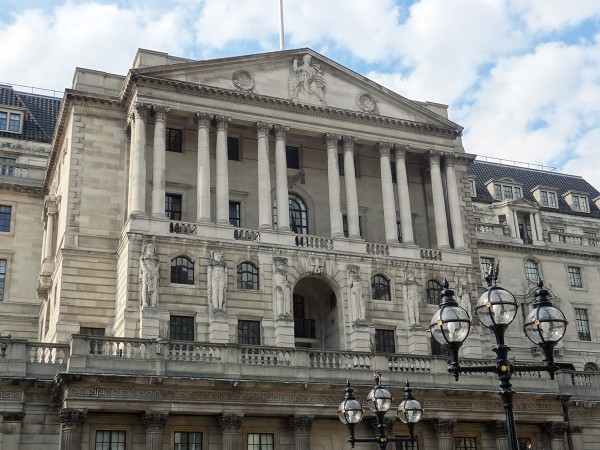 The Bank of England’s monetary policy is aimed at achieving an inflation rate of 2% CPI inflation ‘within a reasonable time period’, typically within 24 months. But speaking in Nottingham in one of the ‘Future Forum‘ events on 14 October, the Bank’s Governor, Mark Carney, said that the Bank would be willing to accept inflation above the target in order to protect growth in the economy.
The Bank of England’s monetary policy is aimed at achieving an inflation rate of 2% CPI inflation ‘within a reasonable time period’, typically within 24 months. But speaking in Nottingham in one of the ‘Future Forum‘ events on 14 October, the Bank’s Governor, Mark Carney, said that the Bank would be willing to accept inflation above the target in order to protect growth in the economy.
“We’re willing to tolerate a bit of an overshoot in inflation over the course of the next few years in order to avoid rising unemployment, to cushion the blow and make sure the economy can adjust as well as possible.”
But why should the Bank be willing to relax its target – a target set by the government? In practice, a temporary rise above 2% can still be consistent with the target if inflation is predicted to return to 2% within ‘a reasonable time period’.
 But if even if the forecast rate of inflation were above 2% in two years’ time, there would still be some logic in the Bank not tightening monetary policy – by raising Bank Rate or ending, or even reversing, quantitative easing. This would be the case when there was, or forecast to be, stagflation, whether actual or as a result of monetary policy.
But if even if the forecast rate of inflation were above 2% in two years’ time, there would still be some logic in the Bank not tightening monetary policy – by raising Bank Rate or ending, or even reversing, quantitative easing. This would be the case when there was, or forecast to be, stagflation, whether actual or as a result of monetary policy.
The aim of an inflation target of 2% is to help create a growth in aggregate demand consistent with the economy operating with a zero output gap: i.e. with no excess or deficient demand. But when inflation is caused by rising costs, such as that caused by a depreciation in the exchange rate, inflation could still rise even though the output gap were negative.
A rise in interest rates in these circumstances could cause the negative output gap to widen. The economy could slip into stagflation: rising prices and falling output. Hopefully, if the exchange rate stopped falling, inflation would fall back once the effects of the lower exchange rate had fed through. But that might take longer than 24 months or a ‘reasonable period of time’.
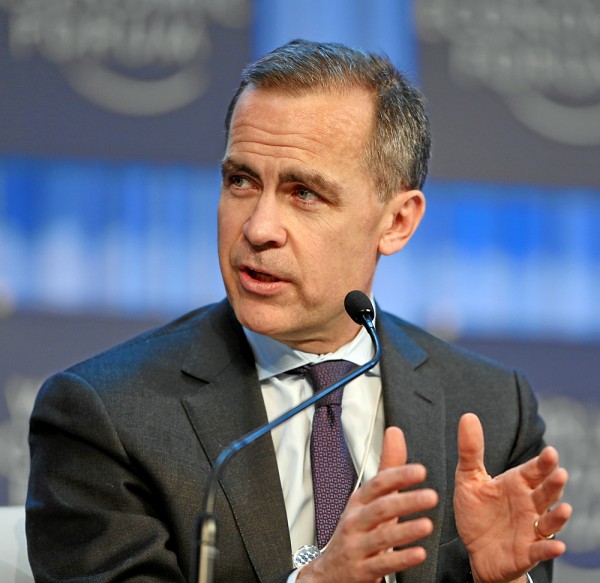 So even if not raising interest rates in a situation of stagflation where the inflation rate is forecast to be above 2% in 24 months’ time is not in the ‘letter’ of the policy, it is within the ‘spirit’.
So even if not raising interest rates in a situation of stagflation where the inflation rate is forecast to be above 2% in 24 months’ time is not in the ‘letter’ of the policy, it is within the ‘spirit’.
But what of exchange rates? Mark Carney also said that “Our job is not to target the exchange rate, our job is to target inflation. But that doesn’t mean we’re indifferent to the level of sterling. It does matter, ultimately, for inflation and over the course of two to three years out. So it matters to the conduct of monetary policy.”
But not tightening monetary policy if inflation is forecast to go above 2% could cause the exchange rate to fall further. It seems as if trying to arrest the fall in sterling and prevent a fall into recession are conflicting aims when the policy instrument for both is the rate of interest.
Articles
BoE’s Carney says not indifferent to sterling level, boosts pound Reuters, Andy Bruce and Peter Hobson (14/10/16)
Bank governor Mark Carney says inflation will rise BBC News, Kamal Ahmed (14/10/16)
Stagflation Risk May Mean Carney Has Little Love for Marmite Bloomberg, Simon Kennedy (14/10/16)
Bank can ‘let inflation go a bit’ to protect economy from Brexit, says Carney – but sterling will be a factor for interest rates This is Money, Adrian Lowery (14/10/16)
UK gilt yields soar on ‘hard Brexit’ and inflation fears Financial Times, Michael Mackenzie and Mehreen Khan (14/10/16)
Brexit latest: Life will ‘get difficult’ for the poor due to inflation says Mark Carney Independent, Ben Chu (14/10/16)
Prices to continue rising, warns Bank of England governor The Guardian, Katie Allen (14/10/16)
Bank of England
Monetary Policy Bank of England
Monetary Policy Framework Bank of England
How does monetary policy work? Bank of England
Future Forum 2016 Bank of England
Questions
- Explain the difference between cost-push and demand-pull inflation.
- If inflation rises as a result of rising costs, what can we say about the rate of increase in these costs? Is it likely that cost-push inflation would persist beyond the effects of a supply-side shock working through the economy?
- Can interest rates be used to control both inflation and the exchange rate? Explain why or why not.
- What is the possible role of fiscal policy in the current situation of a falling exchange rate and rising inflation?
- Why does the Bank of England target the rate of inflation in 24 months’ time and not the rate today? (After all, the Governor has to write a letter to the Chancellor explaining why inflation in any month is more than 1 percentage point above or below the target of 2%.)
- What is meant by a zero output gap? Is this the same as a situation of (a) full employment, (b) operating at full capacity? Explain.
- Why have UK gilt yields soared in the light of a possible ‘hard Brexit’, a falling exchange rate and rising inflation?
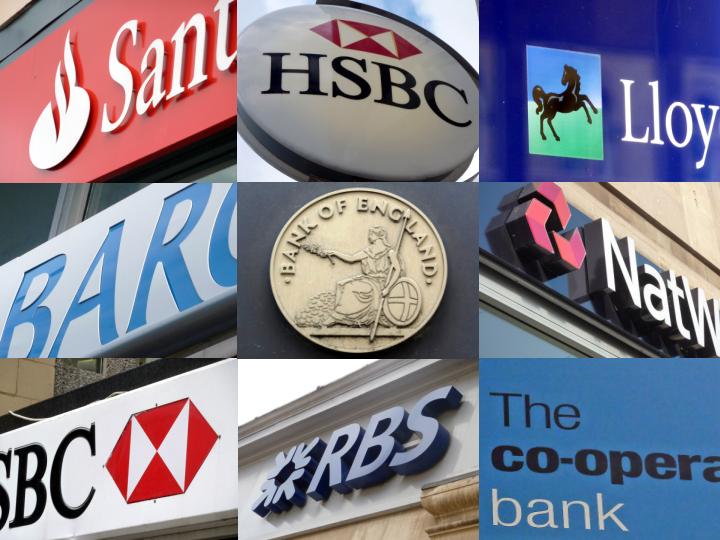 In a recent blog Accelerating interest in the interesting case of UK interest rates we compared the level of the official Bank Rate, which has now been at 0.5 per cent for over seven years, with a representative unsecured borrowing rate. In doing so, we found some evidence that credit conditions might be easing following the credit market disturbance of the late 2000s. Here we take the opportunity not only to review that data again one month on, but also to see whether a similar picture is true for the mortgage market.
In a recent blog Accelerating interest in the interesting case of UK interest rates we compared the level of the official Bank Rate, which has now been at 0.5 per cent for over seven years, with a representative unsecured borrowing rate. In doing so, we found some evidence that credit conditions might be easing following the credit market disturbance of the late 2000s. Here we take the opportunity not only to review that data again one month on, but also to see whether a similar picture is true for the mortgage market.
Theories of the financial accelerator argue that the macroeconomic environment can affect commercial banks’ lending practices. One way in which this can operate is through the difference between banks’ lending rates and the official Bank Rate. We can think of such interest-rate differentials – or spreads – as a credit premium. The size of the premium may be thought to reflect lenders’ perceived risk of default by borrowers. It is argued by some economists that interest-rate differentials will fall when the economy is doing well and increase when the economy is doing less well. This is because the probability of default by borrowers is seen as smaller when the macroeconomic environment improves.
The effect of interest-rate differentials that are contingent on the macroeconomic environment is to amplify the business cycle. For example, a positive demand-side shock, such as a rise in consumer confidence, which causes the economy’s aggregate demand to rise will, in turn, lead to lower borrowing rates relative to the official Bank Rate. This financial effect further stimulates the demand for credit and, as a consequence, aggregate demand and economic activity. It is an example of what economists called the financial accelerator.
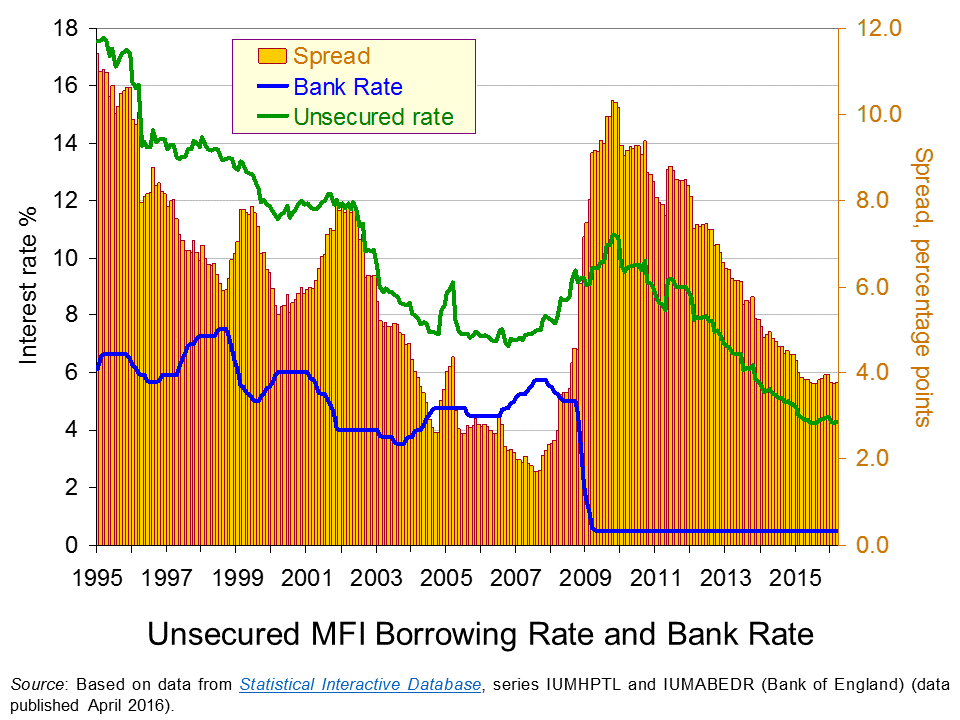 The chart shows the Bank Rate along with the average unsecured borrowing rate on loans by Monetary Financial Institutions (MFIs) of £10 000. Unlike secured borrowing, which we consider shortly, unsecured borrowing is not secured against property.
The chart shows the Bank Rate along with the average unsecured borrowing rate on loans by Monetary Financial Institutions (MFIs) of £10 000. Unlike secured borrowing, which we consider shortly, unsecured borrowing is not secured against property.
As expected, we can see that the unsecured borrowing rate is greater than the Bank Rate. In other words, there is a positive interest-rate differential. However, this differential is seen to vary. It falls sharply in the period up to the financial crisis. In early 2002 it was running at 8 percentage points. By summer 2007 the differential had fallen to only 1.7 percentage points. (Click here to download a PowerPoint of the chart.)
The period from 2002 to 2007 was characterised by consistently robust growth with the UK economy growing by about 2.7 per cent per annum over this period. This may point to economic growth can contributing to an easing of credit conditions as implied by the financial accelerator.
The story from 2008 changes very quickly as the interest-rate differential increases very sharply. In 2009, as the official Bank Rate was cut to 0.5 per cent, the unsecured borrowing rate climbed to close to 10.5 per cent. Consequently, the interest-rate differential rose to 10 percentage points. Inter-bank lending had dried up with banks concerned that banks would default on loans. The increase in interest rates on lending to the non-bank private sector was stark and evidence of a credit market disruption.
The interest-rate differential for unsecured borrowing has steadily declined since its peak at the end of 2009 as the unsecured borrowing rate has fallen. This implies that credit conditions have eased. In March 2016 our interest-rate differential for unsecured borrowing stood at 3.8 percentage points, not dissimilar to levels over the past 12 months. Interestingly, today’s differential on unsecured borrowing is lower than the 6.5 percentage point average over the period from 1997 to 2003, before the differential then went on its pre-crisis fall.
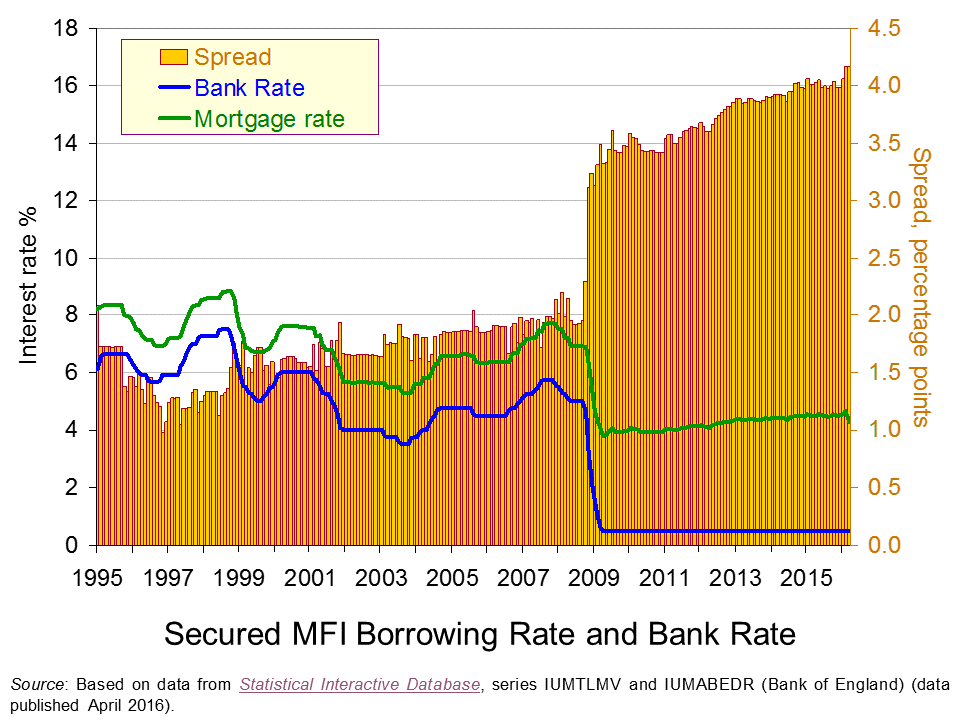 Our second chart repeats the analysis but this time for mortgages. The representative mortgage rate is the average standard variable mortgage rate.
Our second chart repeats the analysis but this time for mortgages. The representative mortgage rate is the average standard variable mortgage rate.
Unlike that for unsecured borrowing, the interest-rate differential for mortgages is fairly constant up to the financial crisis. The widely report credit easing in the mortgage market appears to have operated more through amounts lent rather than through price, as evidenced by rising mortgage advance-to-income ratios. (Click here to download a PowerPoint of the chart.)
The second chart shows clear evidence of a credit market disruption from 2009. Hence, the markets for secured and unsecured lending saw credit conditions tighten with interest-rate differentials rising markedly. However, it shows that the higher interest-rate differential for secured lending following the credit market disruption remains. So while the differential has fallen sharply for unsecured lending the situation is quite different in the mortgage market. In fact, February and March 2016 saw the mortgage rate spread at 4.17 percentage points which is an historic high.

Our interest rate data show that interest-rate differentials can vary significantly over time. This is important to understand when we are thinking about the relationships between the macroeconomy and the financial system. Significantly, the data suggest that interest rates on different financial instruments can behave differently such that differences emerge in the patterns of spreads over the official Bank Rate.
The evidence on UK mortgage rates suggests that the market remains affected by the financial crisis and the credit market disruption that arose. Although the level of mortgage rates is historically low – which tends to capture many of the headlines – this masks an historically high premium over the official Bank Rate.
Articles
Bank warns EU vote may hit growth as it holds rates BBC News, (14/4/16)
Carney issues a warning as interest rates are held Belfast Telegraph, (15/4/16)
Bank Of England Leaves Interest Rates On Hold Sky News, (14/4/16)
UK banks plan to boost lending to households but not firms – BoE Reuters, (13/4/16)
Mortgage rates reach record lows as threat of Bank Rate rise evaporates Telegraph, Tara Evans (1/4/16)
Data
Bankstats (Monetary and Financial Statistics) – Latest Tables Bank of England
Statistical Interactive Database – interest and exchange rates data Bank of England
Questions
- Why would we expect banks’ borrowing rates to be higher than the official Bank Rate?
- How might banks’ credit criteria change as the macroeconomic environment changes? Explain your answer.
- As well as the macroeconomic environment, what other factors might lead to a change in the interest-rate differential between banks’ borrowing rates and the official Bank Rate?
- How would we expect a credit market disruption to affect the interest-rate differential?
- Explain how the financial accelerator affects the change in the size of the economy following a positive demand shock.
- Explain how the financial accelerator affects the change in the size of the economy following a negative demand shock.
- What is the impact of the financial accelerator of the amplitude of the business cycle?
- How might regulators intervene to minimise the effect of the financial accelerator?
- Why might explain the high interest-rate differential on mortgages that continues to persist following the financial crisis?
- Analyse the ways in which the financial system can stabilise or destabilise economies.
 As John reminds us in his blog A seven year emergency we have now seen the official Bank Rate at 0.5 per cent for the past seven years. Understandably many attribute the financial crisis that led to the easing of monetary policy to the lending practices of commercial banks. Consequently, it is important that we better understand (and monitor) banks’ behaviour. Some argue that these practices are affected by the macroeconomic environment, with credit conditions varying across the business cycle. We consider here what recent patterns in interest rates might tell us about credit conditions.
As John reminds us in his blog A seven year emergency we have now seen the official Bank Rate at 0.5 per cent for the past seven years. Understandably many attribute the financial crisis that led to the easing of monetary policy to the lending practices of commercial banks. Consequently, it is important that we better understand (and monitor) banks’ behaviour. Some argue that these practices are affected by the macroeconomic environment, with credit conditions varying across the business cycle. We consider here what recent patterns in interest rates might tell us about credit conditions.
One way in the macroeconomic environment might affect commercial banks’ lending practices is through the difference between banks’ lending rates and the official Bank Rate. We can think of such interest rate differentials – or spreads – as a credit premium. In other words, the greater are commercial borrowing rates relative to the Bank Rate, the greater the credit premium being demanded by banks. On the other hand, the lower the interest rate on borrowing relative to the Bank Rate, the smaller the credit premium.
Some economists argue that interest-rate differentials will fall when the economy is doing well and increase when the economy is doing less well. This is because the probability of default by borrowers is seen as smaller when the macroeconomic environment improves. If this is the case, it will tend to amplify the business cycle, since economic shocks will have larger affects on economic activity.
Consider a positive demand-side shock, such as a rise in consumer confidence, which lowers the propensity of households to save. As the positive shock causes the economy’s aggregate demand to rise, the economy grows. This growth in economic activity might result in lower borrowing rates offered by commercial banks relative to the official Bank Rate. Since savings rates tend to be close to the official Bank Rate, this also means that the cost of borrowing falls relative to the interest rates on savings. This financial effect further stimulates the demand for credit and, as a consequence, aggregate demand and economic activity. It is an example of what economists called the financial accelerator.
Similarly, the financial accelerator means that negative shocks depress economic activity by more than would otherwise be the case. A fall in consumer confidence, for example, would cause economic activity to fall as aggregate demand weakens. This, in turn, causes banks to raise borrowing rates relative to the Bank Rate and savings rates. This further dampens economic activity.
 The chart shows the Bank Rate along with the average unsecured borrowing rate on loans by Monetary Financial Institutions (MFIs) of £10 000. (Secured borrowing is that which is secured against property.) We use this borrowing rate to capture general trends in commercial borrowing rates.
The chart shows the Bank Rate along with the average unsecured borrowing rate on loans by Monetary Financial Institutions (MFIs) of £10 000. (Secured borrowing is that which is secured against property.) We use this borrowing rate to capture general trends in commercial borrowing rates.
As expected, we can see that the borrowing rate is greater than the Bank Rate. In other words, there is a positive interest-rate differential. However, this differential is seen to vary. It falls sharply in the period up to the financial crisis. In early 2002 it was running at 8 percentage points. By summer 2007 the differential had fallen to only 1.7 percentage points. (Click here to download a PowerPoint of the chart.)
The period from 2002 to 2007 was characterised by consistently robust growth. The UK economy grew over this period by about 2.7 per cent per annum. This would certainly fit with the story that economic growth may have contributed to an easing of credit conditions which, in turn, helped to induce growth. Regardless, the falling interest-rate differential points to credit conditions easing.
The story from 2008 changes very quickly as the interest-rate differential increases very sharply. In 2009, as the official Bank Rate was cut to 0.5 per cent, the unsecured borrowing rate climbed to close to 10.5 per cent. Consequently, the interest-rate differential rose to 10 percentage points. Inter-bank lending had dried up with banks concerned that banks would default on loans. The increase in interest rates on lending to the non-bank private sector was stark and evidence of a credit market disruption.
The interest-rate differential has steadily declined since its peak at the end of 2009 as the unsecured borrowing rate has fallen. Hence credit conditions have eased. In fact, in February 2016 our indicative interest rate differential stood at 3.8 percentage points, unchanged from its level in January. This is its lowest level since July 2008. Furthermore, today’s differential is lower than the 6.5 percentage point average over the period from 1997 to 2003, before the differential then went on its pre-crisis fall.
Given concerns about the impact of credit cycles on the macroeconomy we can expect the authorities to keep a very keen eye on credit conditions in the months ahead.
Articles
Bank holds UK interest rates at 0.5% BBC News (17/3/16)
UK’s record low interest rates to continue in 2016 The Guardian, Katie Allen (3/3/16)
Big rise in consumer credit in January BBC News, Brian Milligan (29/2/16)
Household debt binge has no end in sight, says OBR The Telegraph, Szu Ping Chan (17/3/16)
Data
Bankstats (Monetary and Financial Statistics) – Latest Tables Bank of England
Statistical Interactive Database – interest and exchange rates data Bank of England
Questions
- Why would we expect banks’ borrowing rates to be higher than the official Bank Rate?
- What factors might lead to a change in the interest-rate differential between banks’ borrowing rates and the official Bank Rate?
- How would we expect a credit market disruption to affect the interest-rate differential?
- Explain how the financial accelerator affects the change in the size of the economy following a positive demand shock.
- Explain how the financial accelerator affects the change in the size of the economy following a negative demand shock.
- What is the impact of the financial accelerator of the amplitude of the business cycle?
- How might banks’ credit criteria change as the macroeconomic environment changes?
- How might regulators intervene to minimise the effect of the financial accelerator?
 On 2 November, the Bank of England raised Bank rate from 0.25% to 0.5% – the first rise since July 2007. But was now the right time to raise interest rates? Seven of the nine-person Monetary Policy Committee voted to do so; two voted to keep Bank Rate at 0.25%.
On 2 November, the Bank of England raised Bank rate from 0.25% to 0.5% – the first rise since July 2007. But was now the right time to raise interest rates? Seven of the nine-person Monetary Policy Committee voted to do so; two voted to keep Bank Rate at 0.25%. The Bank of England is well aware of these uncertainties. Although it plans two more rises in the coming months and then Bank Rate remaining at 1% for some time, this is based on its current assessment of the outlook for the economy. If circumstances change, the Bank will adjust the timing and total amount of future interest rate changes.
The Bank of England is well aware of these uncertainties. Although it plans two more rises in the coming months and then Bank Rate remaining at 1% for some time, this is based on its current assessment of the outlook for the economy. If circumstances change, the Bank will adjust the timing and total amount of future interest rate changes. Bank of England takes slow lane after first rate hike since Reuters, David Milliken, William Schomberg and Julian Satterthwaite (2/11/17)
Bank of England takes slow lane after first rate hike since Reuters, David Milliken, William Schomberg and Julian Satterthwaite (2/11/17) Bank of England hikes rates for the first time in a decade CNBC, Sam Meredith (2/11/17)
Bank of England hikes rates for the first time in a decade CNBC, Sam Meredith (2/11/17) Bank of England Inflation Report Press Conference, Opening Remarks Financial Times on YouTube, Mark Carney (2/11/17)
Bank of England Inflation Report Press Conference, Opening Remarks Financial Times on YouTube, Mark Carney (2/11/17) Inflation Report Press Conference (full) Bank of England on YouTube (2/11/17)
Inflation Report Press Conference (full) Bank of England on YouTube (2/11/17)








